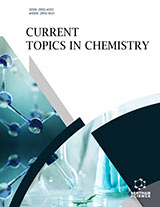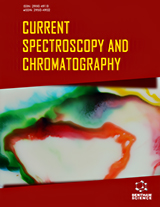Abstract
Background: The article describes how a new robust HPTLC method was developed to separate and quantify aspirin, clopidogrel bisulphate and rosuvastatin calcium in a fixed dose combination present in a capsule dosage form using quality by the design approach.
Methods: A central composite experimental design has been framed and results were analysed by using a modern statistical technique called response surface methodology in order to study the effects of chromatographic chamber saturation time, volumes of ionic modifier and mobile phase ratio on Rf value and band shape. Results: The Rf value predicted for aspirin, clopidogrel bisulphate and rosuvastatin calcium was in between 0.3 and 0.84. After optimization, the chromatographic conditions were 20 min saturation time and 7:3:0.2 v/v/v as the ratio of ethyl acetate, chloroform and pH modifier (Glacial Acetic acid) as a mobile phase. The LOD was found 45.2 ng band-1 15.9 ng band-1 and 6.8 ng band-1; and the LOQ was found 150.7 ng band-1 53.05 ng band-1 and 22.7 ng band-1 for AS, CL and RO respectively Conclusion: The optimized HPTLC method was validated according to (ICH) guideline Q2 (R1). The results prove that QbD concept effectively optimizes HPTLC methods with the minimum number of experiments. Developed HPTLC method was successfully applied for commercial samples of aspirin, clopidogrel bisulphate and rosuvastatin calcium in triple combination capsule dosage form.Keywords: HPTLC, QbD, central composite design, response surface methodology, anti-hyperlipemic drug, aspirin.
Graphical Abstract
Current Analytical Chemistry
Title:A Robust QBD Based High-Performance Thin-Layer Chromatographic Method for the Estimation of Aspirin, Clopidogrel Bisulphate and Rosuvastatin Calcium in a Pharmaceutical Formulation Using Experimental Design
Volume: 13 Issue: 5
Author(s): A.S.K. Sankar*, P. Shanmugasundaram and V. Ravichandiran
Affiliation:
- Research Scholar and Faculty at School of Pharmaceutical Sciences, Vels University (VISTAS), Chennai,India
Keywords: HPTLC, QbD, central composite design, response surface methodology, anti-hyperlipemic drug, aspirin.
Abstract: Background: The article describes how a new robust HPTLC method was developed to separate and quantify aspirin, clopidogrel bisulphate and rosuvastatin calcium in a fixed dose combination present in a capsule dosage form using quality by the design approach.
Methods: A central composite experimental design has been framed and results were analysed by using a modern statistical technique called response surface methodology in order to study the effects of chromatographic chamber saturation time, volumes of ionic modifier and mobile phase ratio on Rf value and band shape. Results: The Rf value predicted for aspirin, clopidogrel bisulphate and rosuvastatin calcium was in between 0.3 and 0.84. After optimization, the chromatographic conditions were 20 min saturation time and 7:3:0.2 v/v/v as the ratio of ethyl acetate, chloroform and pH modifier (Glacial Acetic acid) as a mobile phase. The LOD was found 45.2 ng band-1 15.9 ng band-1 and 6.8 ng band-1; and the LOQ was found 150.7 ng band-1 53.05 ng band-1 and 22.7 ng band-1 for AS, CL and RO respectively Conclusion: The optimized HPTLC method was validated according to (ICH) guideline Q2 (R1). The results prove that QbD concept effectively optimizes HPTLC methods with the minimum number of experiments. Developed HPTLC method was successfully applied for commercial samples of aspirin, clopidogrel bisulphate and rosuvastatin calcium in triple combination capsule dosage form.Export Options
About this article
Cite this article as:
Sankar A.S.K.*, Shanmugasundaram P. and Ravichandiran V., A Robust QBD Based High-Performance Thin-Layer Chromatographic Method for the Estimation of Aspirin, Clopidogrel Bisulphate and Rosuvastatin Calcium in a Pharmaceutical Formulation Using Experimental Design, Current Analytical Chemistry 2017; 13 (5) . https://dx.doi.org/10.2174/1573411013666170127163707
| DOI https://dx.doi.org/10.2174/1573411013666170127163707 |
Print ISSN 1573-4110 |
| Publisher Name Bentham Science Publisher |
Online ISSN 1875-6727 |
 30
30 2
2 1
1
- Author Guidelines
- Bentham Author Support Services (BASS)
- Graphical Abstracts
- Fabricating and Stating False Information
- Research Misconduct
- Post Publication Discussions and Corrections
- Publishing Ethics and Rectitude
- Increase Visibility of Your Article
- Archiving Policies
- Peer Review Workflow
- Order Your Article Before Print
- Promote Your Article
- Manuscript Transfer Facility
- Editorial Policies
- Allegations from Whistleblowers
- Announcements
Related Articles
-
The ATP-Binding Cassette Transporter-2 (ABCA2) Overexpression Modulates Sphingosine Levels and Transcription of the Amyloid Precursor Protein (APP) Gene
Current Alzheimer Research Urotensin-II Receptor: A Double Identity Receptor Involved in Vasoconstriction and in the Development of Digestive Tract Cancers and other Tumors
Current Cancer Drug Targets Current Perspectives on Hypertension in Asian Indians
Current Hypertension Reviews Recent Advancement and Technological Aspects of Pulsatile Drug Delivery System - A Laconic Review
Current Drug Targets Inwardly Rectifying Potassium Channels in the Regulation of Vascular Tone
Current Drug Targets Could Hippocampal Neurogenesis be a Future Drug Target for Treating Temporal Lobe Epilepsy?
CNS & Neurological Disorders - Drug Targets Reduction of Sodium Intake is a Prerequisite for Preventing and Curing High Blood Pressure in Hypertensive Patients - First Part: Therapy
Current Hypertension Reviews Role of Free Radicals and Poly(ADP-Ribose)Polymerase-1 in the Development of Spinal Cord Injury: New Potential Therapeutic Targets
Current Medicinal Chemistry The Importance of Measuring Coronary Blood Flow for Clinical Decision Making
Current Cardiology Reviews New Trends in Anti-Atherosclerotic Agents
Current Medicinal Chemistry Interactions Between the Sympathetic Nervous System and Angiotensin System in Renovascular Hypertension
Current Hypertension Reviews Colloidal and Pharmacological Activity of Albumin in Clinical Fluid Management:Recent Developments
Current Drug Therapy Iron and Iron Chelators: A Review on Potential Effects on Skin Aging
Current Aging Science The Two Faces of Interleukin-17A in Atherosclerosis
Current Drug Targets Brain Slices as Models for Neurodegenerative Disease and Screening Platforms to Identify Novel Therapeutics
Current Neuropharmacology Effect of Hypoxia on Cytochrome P450 Activity and Expression
Current Drug Metabolism The Ubiquitin-Proteasome System and Proteasome Inhibitors in Central Nervous System Diseases
Cardiovascular & Hematological Disorders-Drug Targets Role of Platelets in Angiogenesis in Health and Disease
Current Angiogenesis (Discontinued) Promising Anti-Fibrotic Approaches for Future Treatment of Systemic Sclerosis
Current Rheumatology Reviews Estimation of Abbreviated Mycophenolic Acid Area Under the Concentration- Time Curve during Stable Post-transplant Period by Limited Sampling Strategy
Current Reviews in Clinical and Experimental Pharmacology


























